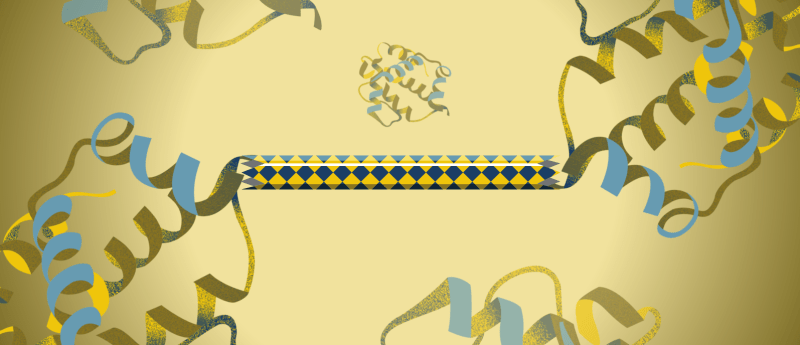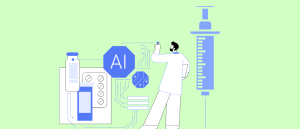The bonds that grow stronger the more they’re pulled apart

Original story from Auburn University (AL, USA).
AI analysis uncovers why certain protein interactions behave like a finger trap, gripping tighter the harder they’re pulled.
Imagine tugging on a Chinese finger trap. The harder you pull, the tighter it grips. This counterintuitive behavior also exists in biology. Certain protein complexes can form catch-bonds, tightening their grip when force is applied. These interactions are essential in processes ranging from how bacteria attach to our cells to how tissues in our body hold together under stress.
But a fundamental mystery has lingered: Do catch-bonds need to be stretched to a certain threshold before they strengthen, or do they activate as soon as force is applied?
In a new study, Marcelo Melo (Colorado State University, CO, USA; formerly Auburn University, AL, USA) and Rafael Bernardi (Auburn University) provide an answer. By combining large-scale molecular simulations with artificial intelligence, they discovered that catch-bonds ‘switch on’ almost immediately after force is applied.
AI as a molecular detective
To crack the problem, the team simulated the behavior of a bacterial protein complex called cellulosomes, one of the strongest catch-bond systems known in nature. Using steered molecular dynamics simulations – essentially a computational microscope that stretches molecules atom by atom – they generated hundreds of high-resolution ‘movies’ of the protein under stress.
AI regression models were then trained to predict when the protein complex would rupture. Surprisingly, the AI could make accurate predictions using only short snippets of simulation data, well before the bond actually broke.
“This told us that the proteins already ‘decide’ their level of resilience right after the pulling begins,” commented Bernardi, Associate Professor of Physics at Auburn University. “The catch-bond mechanism is activated almost instantly.”
 Novel AI drug discovery tool predicts more accurate treatment ‘recipes’
Novel AI drug discovery tool predicts more accurate treatment ‘recipes’
A new AI tool has been shown to identify treatments designed to reverse disease states in cells up to 25 times quicker, more efficiently and more accurately than previous models.
Why it matters
Understanding catch-bonds is not just a curiosity. They are central to how bacteria like Staphylococcus aureus resist being washed away, how our immune cells stick to blood vessels, and how tissues such as cartilage endure constant mechanical stress.
“These are systems where life has learned to use force as an advantage,” explained Bernardi. “By learning from them, we can design new biomaterials, adhesives, and even drug strategies that work with mechanical stress instead of against it.”
A new blueprint for bioengineering
The study also highlights the power of AI to make sense of complex biological data. Instead of relying on static structures, the models captured dynamic patterns of motion across protein interfaces, finding the subtle signals that predict stability.
“This is exciting because it shows AI can detect early signs of resilience that humans would miss,” shared Bernardi. “That opens the door to using these tools in drug design, biomaterials, and synthetic biology.”
The research demonstrates the growing role of computational biophysics at the interface of AI and biology. “This project shows how physics, biology, and artificial intelligence can come together to answer questions that none of us could solve alone,” concluded Bernardi.
This article has been republished from the following materials. Material may have been edited for length and house style. For further information, please contact the cited source. Our press release publishing policy can be accessed here.